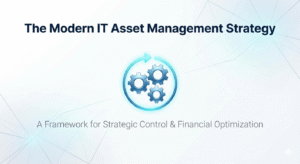[av_hr class=’default’ height=’50’ shadow=’no-shadow’ position=’center’ custom_border=’av-border-thin’ custom_width=’50px’ custom_border_color=” custom_margin_top=’30px’ custom_margin_bottom=’30px’ icon_select=’yes’ custom_icon_color=” icon=’ue808′ font=’entypo-fontello’ av_uid=’av-2q8hdj’ custom_class=’30’ admin_preview_bg=”]
Cybersecurity remains a major concern in a world where nearly every organization has a widening digital footprint. Whether it’s embracing cloud-based workloads, online transactions, remote collaborations, or a data-centric approach to business intelligence. But despite the worrying cybercrime trends, some entrepreneurs don’t seem to appreciate or realize the importance of having a proactive digital security framework.
Sixty-six percent of the 1400+ CISOs interviewed in a survey felt their organizations were unprepared for cyberattacks. The same report also demonstrates what a challenging year 2020 was for cybersecurity and urges entrepreneurs to prioritize long-term IT security solutions to cope with emerging threats and a rapidly shifting business environment.
Would you confidently say that your business is prepared for a cyber incident? Do you have a comprehensive, foolproof security strategy? Here are three reasons why a robust cybersecurity plan matters:
1. The increasing frequency and severity of attacks
Cybercrime is at an all-time high, and it’s only getting worse. A recent study by Tenable®, Inc. revealed that 94 percent of organizations faced at least one business-impacting cyberattack in the past 12 months. And it’s not just the sheer volume of attacks going up; successful breaches now pack a heavier blow.
The COVID-19 pandemic catalyzed more sophisticated and devastating attacks. Threat actors found new exploitation avenues as more workplaces shifted to remote work and IT found its way to traditionally non-digital businesses. Over the past year alone, the attack surface drastically expanded, giving way to a new breed of targeted attacks that do not discriminate against small or large enterprises.
2. Rising costs and penalties for compromised data
The average cost of a data breach currently stands at a whopping $3.86 million and is expected to keep going up. Analysts predict that cybercrime will inflict $6 trillion worth of financial damages, soon becoming the third largest world economy after China and the US.
Cybercrime pays and indeed pays well. Threat actors focus on lucrative opportunities such as ransomware, DoS, and cryptojacking attacks that can potentially fetch millions in just a single exploit. Keep in mind that even after paying ransom or losing data, you still have to clean up after the attackers, which is pricey too.
On top of that, your business may face legal action or financial penalties if a breach occurs due to non-compliance with cybersecurity and data privacy regulations. Nowadays, companies handling sensitive information must abide by local or international information protection standards and laws such as FAST, FISMA, HIPAA, CCPA, and GDPR.
3. Cybersecurity promotes business productivity and continuity
Some hackers take weeks or even months to orchestrate their attacks. In that gestation period, the attacker leaches of your business resources. For instance, social engineering scams usually engage employees, taking up their valuable time. Attempted or ongoing attacks can also slow down your servers and networks, hindering efficient digital workflows. This ultimately leads to reduced digital throughput and overall business productivity.
In addition to financial damages, a successful data breach can also ruin your brand’s reputation. Customers, stakeholders, and business partners may no longer trust your organization after falling victim to an attack. Some organizations shut down for good after suffering a devastating cyber incident.
Cybersecurity is a vital part of business continuity and survival planning. It helps your organization stay afloat in the risky e-commerce world while maintaining credibility and good customer relations.
Develop a cybersecurity plan before it’s too late
Drafting an effective cybersecurity plan is all about managing risks. Begin by identifying all the security loopholes in your organization and analyze any potential threats that could leverage those vulnerabilities. From there, it’s all a matter of allocating resources and efforts towards sealing off the security weaknesses.
In a nutshell, that’s what a cybersecurity plan entails. However, the actual process of drafting security policies and implementing the right solutions is a lot more sophisticated and technical. But KME Systems is here for you. Let our team handle all the troublesome details of data protection, cloud security, and compliance. At the same time, you focus on running the businesses. Talk to us to learn more.
3-reasons-your-business-should-have-a-cybersecurity-plan




